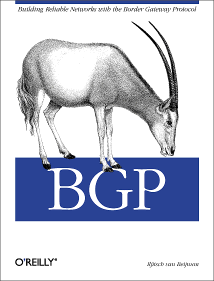
|

|

|
|
Home ·
BGP Expert Test ·
What is BGP? ·
BGP Vendors ·
Links ·
Archives ·
Books ·
My New BGP Book | ||
 (advertisement)
(advertisement)
| ||
|
BGP on Cisco 2500 (posted 2004-03-31)
It has been a while since the last news posting. My apologies for that. Here is something to hold you over until I can find some real news: When perusing the HTTP referrer log, I noticed that a lot of people are finding this site in search of "bgp+2500" or something similar. So... is it possible to run BGP on a Cisco 2500 router? The short answer is "yes". The IOS images for the 2500 support BGP, including BGP for IPv6. (They do not, however, support OSPF for IPv6 even though OSPF for IPv4 is supported and the "ipv6 router ospf" command may exist. Same thing for IS-IS: the command exists, but the protocol isn't present in any of the 2500 images.) The slightly longer answer is that a 2500 is of limited use for inter-domain routing. Actually way back when I got started with BGP I used a 2514 with 16 MB RAM and it could hold the entire 35000 or so entry global routing table. From two upstreams even, if I remember correctly. However, in the mean time the global routing table has gotten four times as big, and the 2500's memory limit is still 16 MB. The fact that the 2500 series sports a 68030 CPU doesn't really help either. All of this means that you can only run BGP on a 2500 if you don't send it more than a few thousand routes. You also shouldn't send it a full feed and have the 2500 filter out the unwanted routes, as this will tax the CPU too much and make for many-minute convergence times. Note that even 35000 routes wouldn't work anymore today, as modern IOS images need a lot more memory for their internal house keeping. On bigger routers it gets even worse because unlike the 2500, those can't run their software from flash, so it must be copied to RAM. Additionally, the switching path of choice is CEF these days, which takes a lot of memory. (Without CEF you'll be using fast switching which uses just as much memory but only when needed, so it's not only the CPU that melts down but you also run out of memory when a slammer-like worm hits.) So you may be able to get away with a full table on a Cisco with 128 MB RAM (or you may not), but 256 MB gives you much more elbow room. Unfortunately, Cisco still makes boxes that can run BGP but won't take enough memory to do so properly. A good example are the 3550 series multilayer switches.
|
